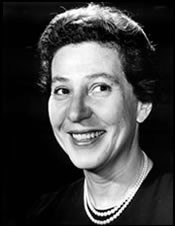
|
Compositions *** |
Teisho
year
1975
duration
31 minutes
instrumentation
Eight solo singers or small chorus and string quartet
text
Teisho are the sermons or talks given by the Zen masters to the disciples. Those used here date from the 10th to the 12th centuries.
grant
National Endowment for the Arts
première
May 22, 1976, Bennington College, Bennington, Vermont; Sine Nomine Singers and the Contemporary Quartet (Jean Ingraham, violin, Thomas Kornacker, violin, Jacob Glick, viola, and Chris Finckel, cello), Vivian Fine, conductor
recording
Available on demo CD
movements
Part One
1. The Stringless Harp (Shou-Shen)
2. With the Passing of Winter (Ummon)
3. Let the Difference Be Even a Tenth of an Inch (Hogen Mon-yeki)Part Two
4. If people ask me what Zen is like I will say that it is like learning the art of burglary (Wu-tsu Fa-yen)
5. The King of Good Memory (Goso Hoyen)
6. The Ten Thousand Things (Shen-hui)
program notes
Among my notes when I was writing the piece is a quote from T.S. Eliot: “to apprehend/ /the point of intersection of the timeless / With time, is an occupation of the saint.” And from Bronowski’s The Common Sense of Science: “The most difficult question in science concerns the question of order. The notion of order cannot be defined on any ground except its success. It cannot be put into a science in advance at all. Order is the selection of one set of appearances rather than another because it gives a better sense of the reality behind the appearances.”
Technically, the string parts are composed entirely from a “constellation” of 163 notes which appear at the very beginning. They are modified and transformed in many ways. The vocal parts have their own music that does not involve the procedures used for the instruments. I remember being very absorbed by how these different musics fitted together.–Vivian Fine, letter to Christopher Fulkerson, who conducted a performance of Teisho in San Francisco in 1988.
…Teisho’s layerings, texture manipulation, and advanced string writing resemble ideas Fine experimented with in Missa Brevis. Also, both pieces reflect her spiritual inquiries at the time. Zen training was becoming much more available in the United States during the mid-1970s, and Fine, a voracious reader, explored some of D.T. Suzuki’s writings and selected several Zen stories to set to music. As indicated on the score, “Teisho are the sermons or talks delivered by the Zen masters to the disciples.” Often a teisho involves a puzzle that is difficult for the listener to comprehend, and Fine’s Teisho is no exception. For her it was an opportunity to be “interested in two kinds of time, seamless and measured.”
…Fine divided her composition into two parts and chose three texts for part one…and three for part two [see Movements]. Teisho is continuous, with only a slight pause between parts one and two. Careful elisions join the ending of one text to the beginning of the next. A change in meter and rhythmic texture announces a new text.”–Heidi Von Gunden, The Music of Vivian Fine, Scarecrow Press, 1999
reviews
“What was musically exciting in these sermons was the way harmonic structures that are smaller than the full 12 tones, but much larger than anything Mozart would have recognized, emerged from open-ended dialogue. Here was post-modernism at its finest.”
–The Voice, San Francisco, January 28, 1983
audio files
The King of Good Memory (excerpt)
I know there is a mantram in one of the Sutras known as The King of Good Memory. Those who are forgetful may recite it, and the thing forgotten will come again. Well, I must try.” He then recited the mantram, “Om o-lo-lok-kei svaha!” Clapping his hands and laughing heartily, he said: “I remember, I remember; this it was; when you seek the Buddha, you cannot see him; when you look for the patriarch, you cannot see him…
The Stringless Harp (end)
…(A monk came to Shou-shan and asked, “Please play me a tune on the stringless harp.”) The master was quiet for some little while, and said, “Do you hear it?” “No, I do not hear it.” “Why,” said the master, “did you not ask louder?”The Ten-Thousand Things (excerpt)
A bright mirror is set up on a high stand; its illumination reaches the ten thousand things, and they are all reflected in it….